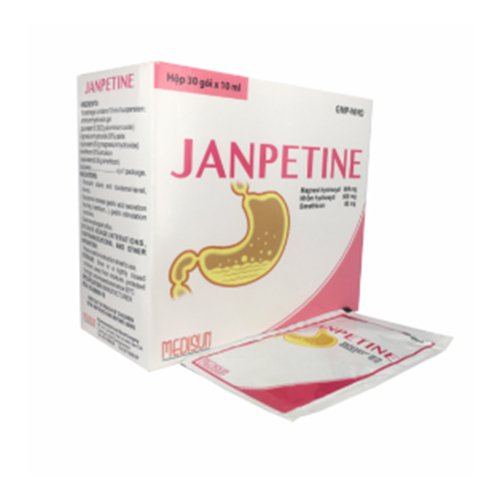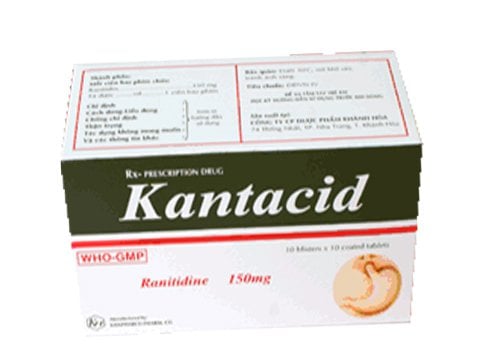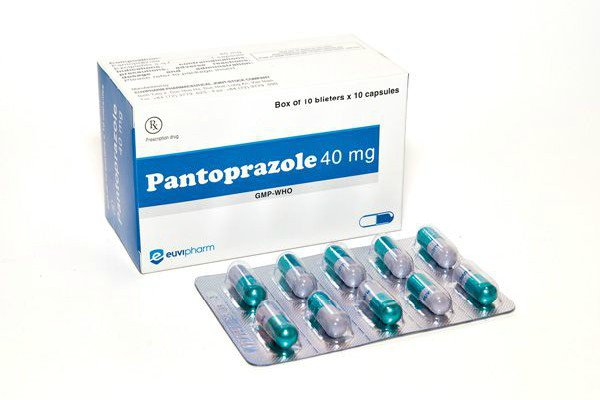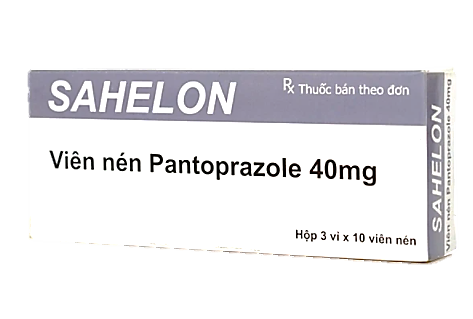Uses of Nexiprazole
This is an automatically translated article.
Nexipraz drug is made in the form of hard capsules, with the main ingredient being Esomeprazole. The drug is used in the treatment of stomach ulcers, gastroesophageal reflux - oesophagitis,...
1. Uses of the drug Nexipraz
Nexipraz 40mg drug has the main ingredient Esomeprazole 40mg and excipients. Esomeprazole is a weak base that converts to the active form in highly acidic media. It reduces acid secretion, helps reduce gastric and duodenal ulcers, relieves stomach pain and Zollinger Ellison syndrome,...
Indications for using Nexipraz:
Treatment of gastroesophageal reflux; Treatment of gastric and duodenal ulcers; Treatment of Zollinger Ellison syndrome ; Prevention of recurrent peptic ulcers in patients with Helicobacter Pylori (HP) infection. Contraindications to the use of Nexipraz:
People who are hypersensitive, allergic to the ingredients/excipients of the drug; Concomitant use with atazanavir; Patients with severe liver failure; Children under 12 years old.
2. How to use and dose Nexipraz
How to use: The drug is taken orally, swallow the tablet whole with water, chew or crush the tablet. Patients can take Nexipraz at any time of the day, before or after meals. However, patients should arrange to take their medication at the same time each day.
Dosage:
Dosage in adults:
Treatment of gastroesophageal reflux - oesophagitis with ulcers: Use a dose of 40mg/time/day for 4 - 8 weeks; Treatment of gastric and duodenal ulcers: In combination with antibiotics in case of HP infection with a dose of Esomeprazole 40mg/time/day + Amoxicillin 1g x 2 times/day + Clarithromycin 500mg x 2 times/day, treat with the drug for 10 days ; Treatment of Zollinger Ellison syndrome: Initial dose is 40mg/time/day. After that, use a maintenance dose of 80-160mg/day, which should be divided into 2 times a day. Dosage for other subjects:
Elderly: No dose adjustment is necessary; Children under 12 years old: Should use other dosage form more suitable; Patients with renal impairment: No dosage adjustment is required but caution should be exercised if the drug is used in patients with severe renal impairment; Patients with hepatic impairment: No dose adjustment is required in patients with mild and moderate hepatic impairment. In patients with severe hepatic impairment, the maximum dose of 20 mg should not be exceeded. Missed dose: When the patient forgets to take Nexipraz, it should be taken as soon as he remembers. If it is almost time for the next dose, skip the missed dose and take the next dose as originally scheduled.
Overdose: Symptoms described in an overdose of Nexipraz include fatigue and gastrointestinal side effects. When there are abnormal symptoms due to drug overdose, the patient should be hospitalized immediately for timely intervention and treatment.
3. Nexiprazole side effects
Some side effects patients may encounter when using Nexipraz include:
Common: Abdominal pain, nausea, diarrhea, constipation, headache,...; Uncommon: Insomnia, dizziness, somnolence, paresthesia, dry mouth, peripheral edema, skin rash, increased liver enzymes,...; Rare: Thrombocytopenia, leukopenia, hyponatremia, hypersensitivity reactions, stomatitis, blurred vision, bronchospasm, myalgia, arthralgia, hepatitis,... If any abnormal symptoms In any case related to the use of Nexipraz, patients should notify their doctor for advice and appropriate management.
4. Be careful when using Nexiprazole
Some notes for patients to remember before and while using Nexipraz:
There have been no studies on the effectiveness and effects of Nexipraz in pregnant and lactating women. To ensure safety, these subjects should consult a doctor before taking the drug; Nexipraz may affect the ability to drive or use machines. Side effects such as dizziness and blurred vision can make it difficult for patients to perform tasks that require attention, such as driving or using machines. Therefore, users need to be cautious; Esomeprazole (the main ingredient of Nexipraz) should not be used concurrently with atazanavir, if necessary, close clinical monitoring is required; Esomeprazole should not be used concomitantly with clopidogrel ; Esomeprazole may reduce the absorption of vitamin B12 due to decreased or deficient gastric acid; Severe hypomagnesemia has been reported in patients treated with esomeprazole for at least 3 months (most cases for 1 year). Malignant neoplasms may mask or alleviate symptoms in cases of suspected gastric ulcer. Therefore, it is necessary to check, evaluate carefully, exclude malignancy before using Nexipraz drug; Patients treated with Nexipraz for a long time (more than 1 year) should be monitored regularly.
5. Drug interactions
Some drug interactions of Nexipraz include:
Nexipraz reduces the absorption of drugs ketoconazole, itraconazole; Nexipraz prolongs the half-life of Cisaprid by about 31%; Nexipraz drug increases the concentration of citalopram, diazepam, imipramine, clomipramine, phenytoin,... in plasma; The patient's health should be closely monitored when Nexipraz is used concomitantly with anticoagulants such as warfarin and heparin, especially at the beginning and end of treatment; Clarithromycin may inhibit the metabolism of Esomeprazole in Nexiprazole, resulting in a doubling of Esomeprazole concentrations. Before using Nexipraz, patients should inform their doctor when they are taking other drugs for advice on reasonable drug use, to avoid adverse interactions. At the same time, patients need to strictly follow the doctor's instructions to minimize the risk of dangerous incidents.
Follow Vinmec International General Hospital website to get more health, nutrition and beauty information to protect the health of yourself and your loved ones in your family.
Please dial HOTLINE for more information or register for an appointment HERE. Download MyVinmec app to make appointments faster and to manage your bookings easily.
This article is written for readers from Sài Gòn, Hà Nội, Hồ Chí Minh, Phú Quốc, Nha Trang, Hạ Long, Hải Phòng, Đà Nẵng.





